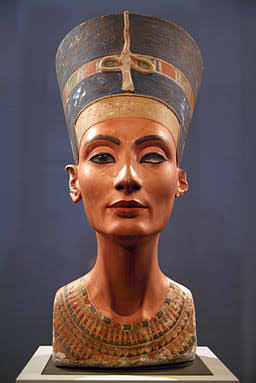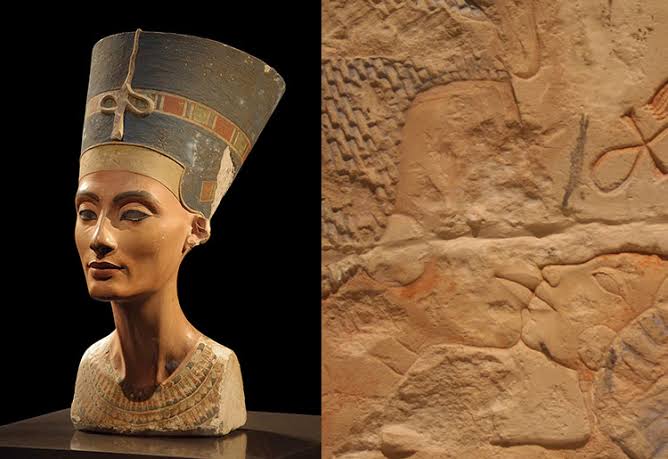Nefertiti, the breathtakingly beautiful queen of ancient Egypt’s 18th Dynasty, continues to captivate the imagination of historians, archaeologists, and enthusiasts alike. Her reign alongside Pharaoh Amenhotep IV (also known as Akhenaten) marks a pivotal period in Egyptian history, characterized by revolutionary changes in art, architecture, and spirituality. As a co-regent and queen, Nefertiti’s influence extended far beyond the traditional roles of royal women, solidifying her position as one of the most fascinating figures in African history.

The Enigmatic Queen Nefertiti: Unveiling the Mystique of Egypt’s Most Iconic Figure
Early Life and Marriage
Born around 1370 BC, Nefertiti’s early life remains shrouded in mystery. Her parentage is unknown, and speculation surrounds her possible connections to the royal family or noble classes. What is certain, however, is her marriage to Amenhotep IV, which likely took place during his early years as co-regent with his father, Amenhotep III. This union would prove to be a defining aspect of her life and legacy.
The Amarna Period
Nefertiti’s rise to prominence coincided with her husband’s ascension to the throne and the subsequent introduction of radical reforms. Amenhotep IV envisioned a new Egypt focused on Aten, the sole sun god, departing from traditional polytheism. This resulted in the new capital Akhetaten and an artistic style highlighting naturalism.
Nefertiti’s Role as Co-regent and Queen
As queen, Nefertiti played a vital role in promoting the Aten worship and supporting her husband’s vision. Her influence extended beyond the palace walls, with depictions of her appearing in art alongside Amenhotep IV, showcasing her equal status. The famous limestone bust of Nefertiti, discovered in 1912, exemplifies her regal beauty and poise. This masterpiece of ancient Egyptian art has become an iconic symbol of feminine elegance and power.
Promoting the Aten Worship
Nefertiti’s devotion to the Aten reflected her personal spirituality beyond royal duty. She and her husband promoted sun god worship together. Their new monotheistic approach broke from traditional Egyptian practices. Nefertiti played a crucial role in this religious transformation.
Legacy and Mystery
Nefertiti’s disappearance from historical records around 1330 BC has sparked intense speculation. Some theories suggest she may have died, while others propose she could have assumed a new identity or ruled under a different name. The mummy in tomb KV35 in the Valley of the Kings is thought by some to be Nefertiti, though this remains debated among scholars.
Conclusion
Nefertiti’s enigmatic presence continues to inspire and fascinate us, a testament to the enduring legacy of ancient Egypt’s most iconic queen. Her beauty, intelligence, and spiritual devotion have cemented her place in history as a symbol of feminine power and strength. As we continue to unravel the mysteries surrounding her life and reign, Nefertiti remains an unforgettable figure, embodying the essence of Africa’s rich and storied past.
Sources:
- Historical records from the Amarna Period
- Archaeological discoveries, including the limestone bust of Nefertiti
- Scholarly interpretations and theories on Nefertiti’s life and legacy
Further Reading:
- “Nefertiti: Egypt’s Sun Queen” by Joyce Tyldesley
- “Akhenaten and Nefertiti: The Spiritual Revolution” by John Romer
- “The Oxford History of Ancient Egypt” edited by Ian Shaw
This blog post aims to provide an in-depth look at Nefertiti’s life, reign, and legacy, highlighting her significance in African history and her enduring impact on our understanding of ancient Egyptian culture.


